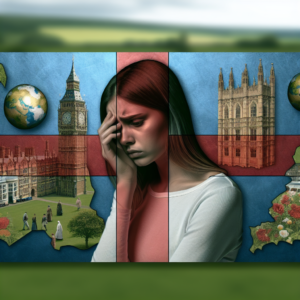Unveiling the Harsh Reality: Domestic Violence in Our Backyards
Introduction:
Domestic violence is a grave issue that affects individuals and families across the globe. It is a form of violence that takes place in the very places we call home, shattering the sense of safety and security that should prevail within those four walls. Domestic violence can manifest in various forms, including physical, emotional, psychological, or sexual abuse, and it affects people of all genders, ages, socioeconomic backgrounds, and cultural groups. In this article, we will delve into the harsh reality of domestic violence, shed light on its impact on victims and society, and discuss the importance of raising awareness and working towards prevention.
Understanding Domestic Violence:
Domestic violence is a pattern of behavior that one person uses to gain power and control over another individual in an intimate relationship. It is not limited to a specific age group, race, or gender, and it is more prevalent than we may believe. According to the World Health Organization, about 30 percent of women worldwide have been subjected to domestic violence by their intimate partner at some point in their lives. Men, too, can be victims of domestic violence, although they are less likely to report the abuse due to societal norms and stereotypes.
The Impact on Victims:
The consequences of domestic violence extend far beyond physical injuries. Victims of domestic violence often endure a range of negative effects, including emotional trauma, decreased self-esteem, anxiety, depression, and a perpetual cycle of fear. The impact on children who witness such violence is particularly devastating, leading to long-term psychological and emotional issues that can persist into adulthood. Domestic violence is not only detrimental to individuals but also to society as a whole, contributing to social and economic costs such as healthcare expenses, loss of productivity, and strain on the criminal justice system.
Recognizing the Signs:
Recognizing the signs of domestic violence is crucial in order to aid victims and provide them with the support they need. It is essential to understand that not all abusive relationships involve physical violence. Emotional abuse, psychological manipulation, economic control, and isolation are also forms of domestic violence. Some common signs to watch out for include frequent injuries, isolation from friends and family, sudden changes in behavior, constant criticism or humiliation, and controlling behaviors exhibited by one partner over the other.
Working Towards Prevention:
Preventing domestic violence requires a multi-faceted approach that involves education, intervention, and support services. Raising awareness about the different forms of domestic violence, the warning signs, and available resources is essential in empowering individuals to seek help and support. Community outreach programs, schools, and workplaces can play a vital role in educating individuals about healthy relationships and promoting respect and equality. It is also crucial to provide comprehensive support services, including shelters, counseling, legal aid, and financial assistance, to help victims escape abusive situations and rebuild their lives.
Frequently Asked Questions:
Q: Is domestic violence limited to physical abuse?
A: No, domestic violence encompasses a range of behaviors, including physical, emotional, psychological, and sexual abuse.
Q: Are men victims of domestic violence as well?
A: Yes, men can be victims of domestic violence, although they are less likely to report it due to societal norms and stereotypes.
Q: What are some warning signs of an abusive relationship?
A: Warning signs can include frequent injuries, isolation from loved ones, changes in behavior, criticism, humiliation, and controlling behaviors.
Q: What can I do to help someone experiencing domestic violence?
A: Listen without judgment, believe them, and encourage them to seek help from local support services such as helplines, shelters, or counseling centers.
Q: How can I contribute to preventing domestic violence in my community?
A: You can contribute by raising awareness, participating in community outreach programs, supporting local organizations, and being an advocate for victims’ rights.
Conclusion:
Domestic violence is an alarming issue that persists in our society, affecting countless lives. It is crucial to shed light on the harsh reality of domestic violence, raise awareness, and work towards prevention. By recognizing the signs, providing support services for survivors, and educating individuals about healthy relationships, we can create a safer and more compassionate society where everyone can thrive. Together, we can tackle domestic violence in our own backyards and strive for a world free from this pervasive form of abuse.
















